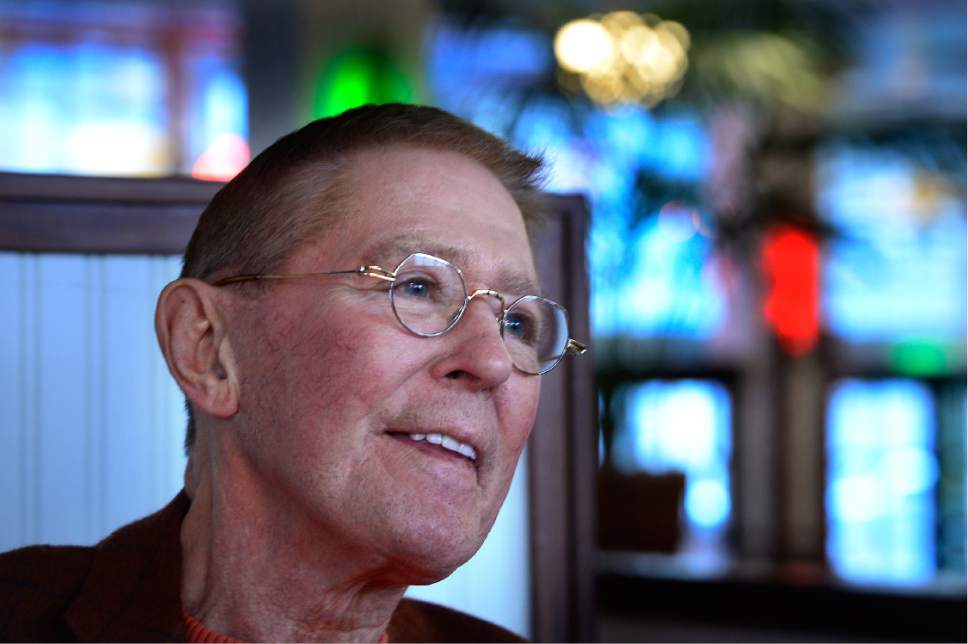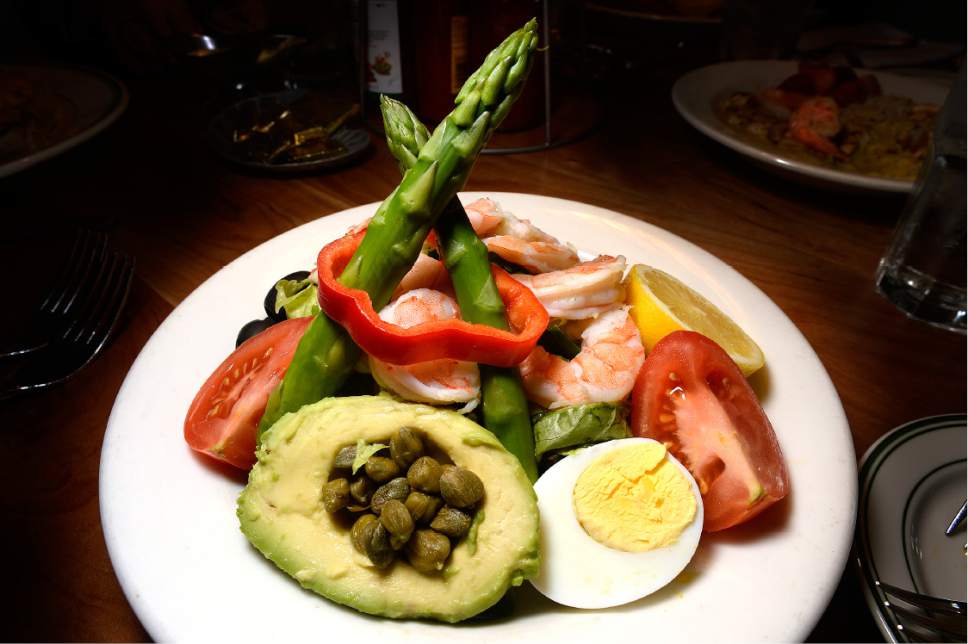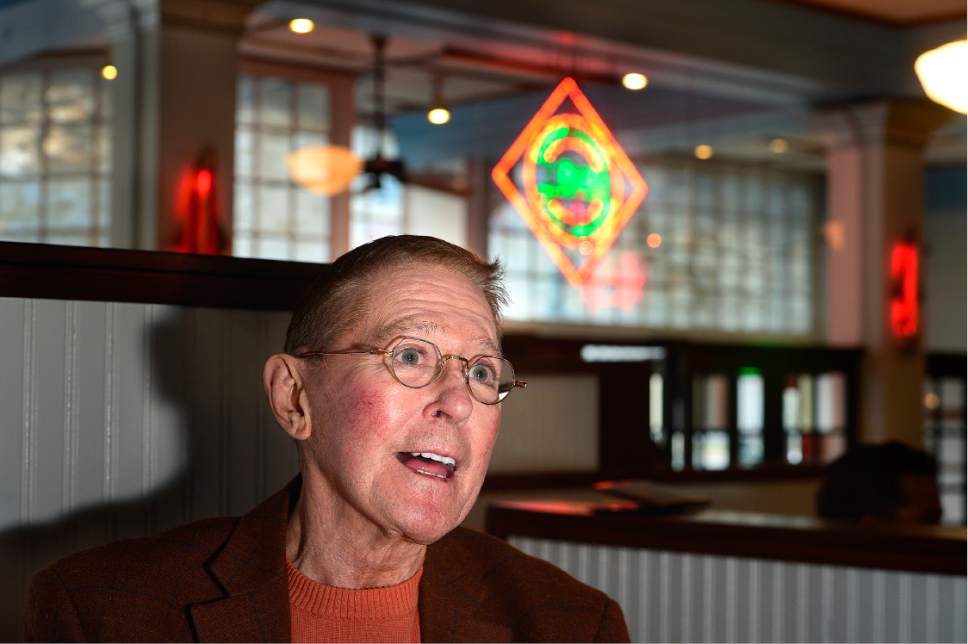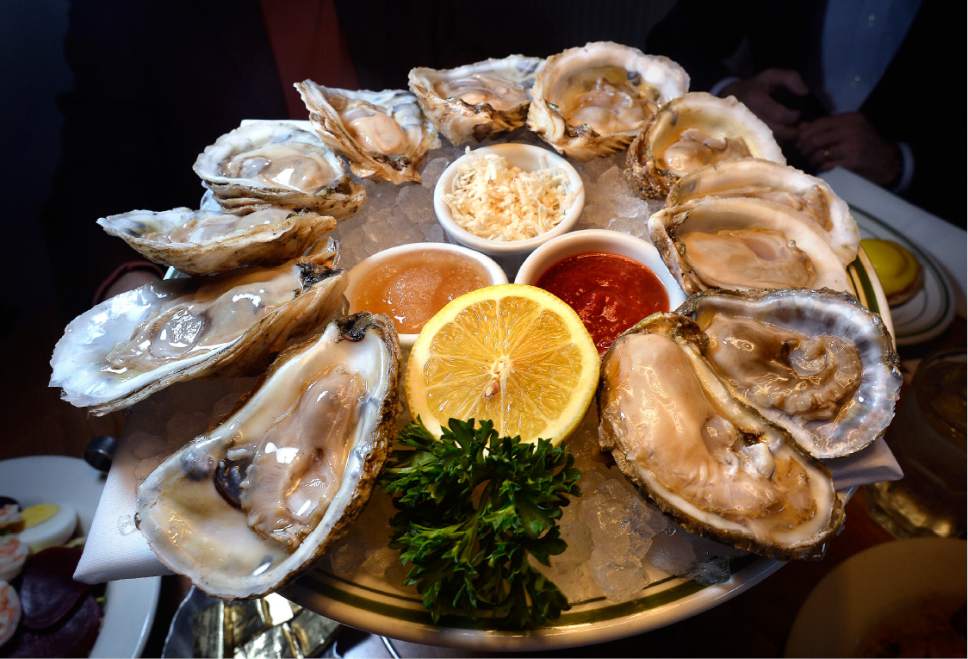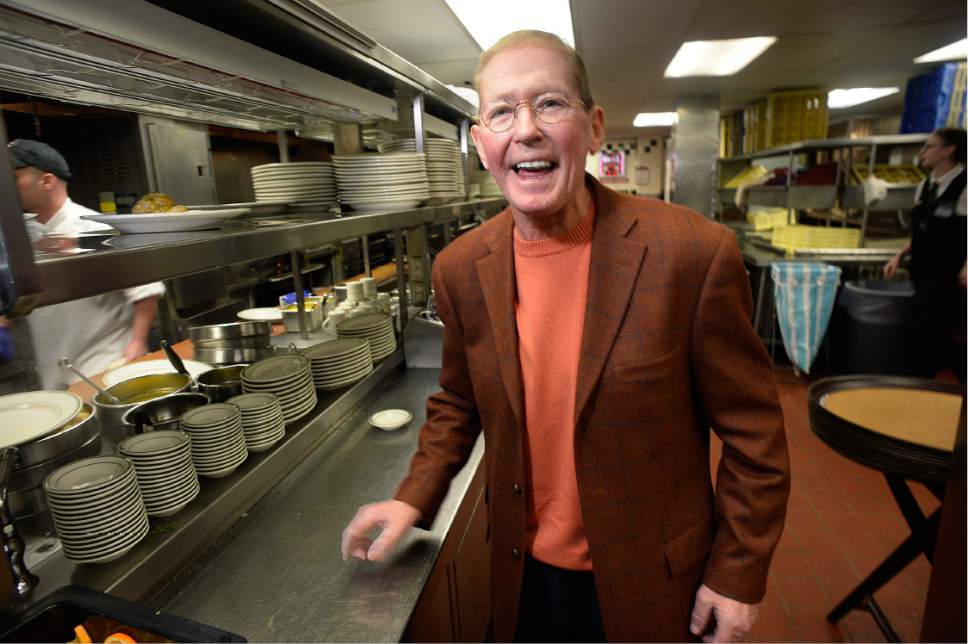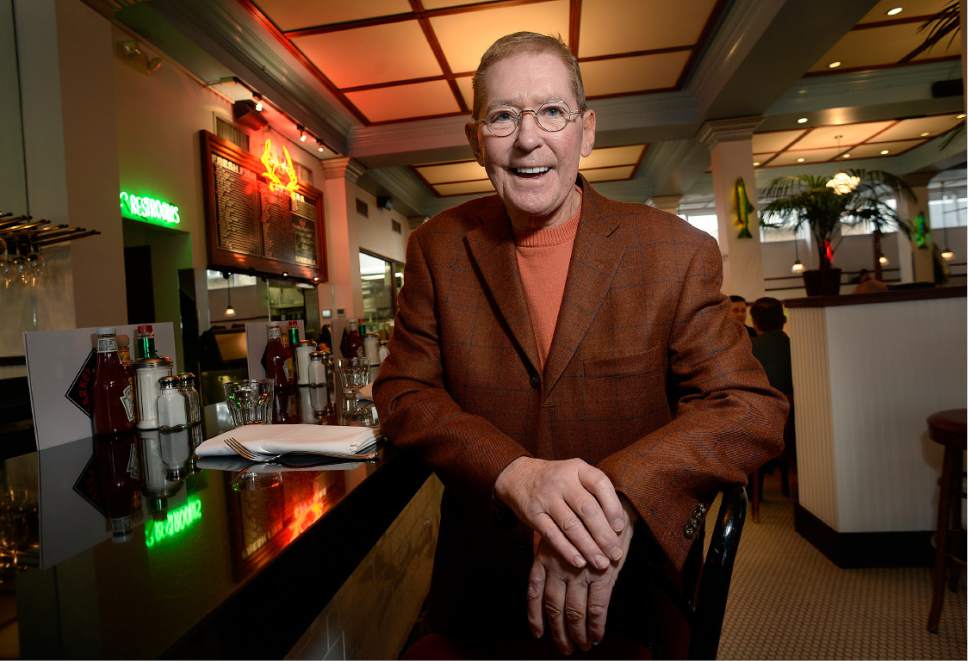This is an archived article that was published on sltrib.com in 2017, and information in the article may be outdated. It is provided only for personal research purposes and may not be reprinted.
The salt and pepper shakers always are filled and wiped sparkling clean; the legendary clam chowder is served in heated bowls; and the liquor bottles — which the owner could make visible — remain hidden behind the bar.
These are details that Tom Guinney initiated 37 years ago when he — along with business partners Tom Sieg and John Williams — opened the first Market Street Grill and Oyster Bar in downtown Salt Lake City.
Sieg and Williams had opened The New Yorker in 1978 and brought Guinney, a California native with experience running a series of seafood restaurants, into the fold in 1980. Eventually, the three formed Gastronomy Inc., opening Market Street Broiler near the University of Utah — which they sold in 2014 — as well as Market Street Grill and Oyster Bars at the Salt Lake International Airport and in Cottonwood Heights and West Jordan.
Guinney is the last survivor of the founding trio. Sieg died in 2008 and Williams, who retired more than six years ago, was killed in a house fire in 2016, the blaze allegedly set by his estranged husband, Craig Crawford. A preliminary hearing is set in the case in March.
Guinney, who turned 69 last month, was given the "Key to the City" by Salt Lake City Mayor Jackie Biskupski recently, in recognition of his years of "leadership in Salt Lake City's restaurant and hospitality industry, contributions to the local economy and cultural scene, and for his support of numerous philanthropies and historic preservation work."
Before accepting the honor, Guinney sat down with The Salt Lake Tribune to talk about the future of Gastronomy, the company's policy on the state liquor barrier — aka "Zion Curtain" — law and why he hates to be called a "restaurateur."
His comments have been edited for space and clarity.
With both your business partners gone, what is the future for Gastronomy Inc.?
It's not time for Tom to exit, not with more than 500 employees. But I don't see us building another Market Street anywhere in Utah, the demographics aren't there. But there is the possibility of expansion into airports in other cities — Phoenix, Denver, Minneapolis.
Like many older restaurants in Utah, Market Street Grill is exempt from the state's "Zion Curtain" law, yet the shelves behind the bar are empty?
We don't display the [liquor] bottles even though we could. It's my philosophy that you should know where you live and understand the community and the historical culture of the state.
Does that mean you believe the "Zion Curtain" should stay?
I'd rather see a regulation that requires restaurants to have a sign on the door that says liquor is sold on the premises.
What are some of your experiences working with the Legislature?
This year will be my 37th session. I'm not partisan, I don't go there. But through the years I've worked with many of the lawmakers — [Rep. Greg] Hughes, [Sen. Curtis] Bramble and [Sen. Jerry] Stevenson — on issues that have an impact on the industry, like liquor and health department regulations. Sen. Howard Stephenson has me on his Red Meat Radio show a few times a year but we always end up talking about food rather than policy. And the public affairs department [for the LDS Church] has asked me to come in and talk to [President Thomas S. Monson]. Whoever it is I ask them, "What do you need to know that you don't understand?" But I've never asked for anything that has benefited [Gastronomy] in particular.
How did you get started in the restaurant industry?
My father operated a coffee shop so I've been wandering a restaurant kitchen since I was 5. I started peeling potatoes and busing tables, then did kitchen prep work. In 1967, I joined the Navy and worked as a cook. After the Navy, in 1971, I worked at Delaney's seafood in Newport Beach opening up new restaurants. It was high volume and it equipped me when I came here.
How did you end up in Utah?
A mutual friend introduced me to John Williams. We must have talked for 1 ½ to two years about opening a restaurant. But there was no discussion about what type; we knew it was going to be a seafood. I thought Utah was the perfect place to grow a business. Salt Lake City was more affordable [than California] and there was this readily available workforce just a few miles away at the University of Utah.
Who developed the Market Street recipes?
When we opened the grill, I had this scroungy notebook, covered with stains, with recipes like the clam chowder, the cocktail sauce and tartar sauce. Our clam chowder is different than most because we use butter and flour to make a roux. Then we add onions, celery, fresh leeks, sherry and extra-heavy whipping cream. I still believe it's one of the finest clam chowders in the United States; the consistency is perfect.
So many employees in Utah's restaurant industry got their start working for a Gastronomy restaurant. How does that make you feel?
I don't ski, I'm not LDS. When I came to Utah, I didn't know anyone except John. But I did have an eye for particulars and I developed an employee manual that is still used today. It created a structure of service that employees follow — our bowls sit under heat lamps so the soup always stays warm; we freeze the plates so the shrimp Louie (salad) always comes out cold. The salt and pepper shakers are always filled and cleaned; so is the ketchup bottle. The water always has ice. Managers we've had over the past 36 [years] have gone on to other things and been successful because of the experience they had here. That's why I don't like the term "restaurateur" or "businessman." When people ask me what I do, I say I'm a restaurant manager.


